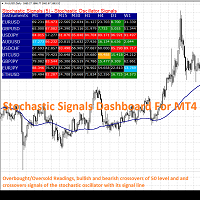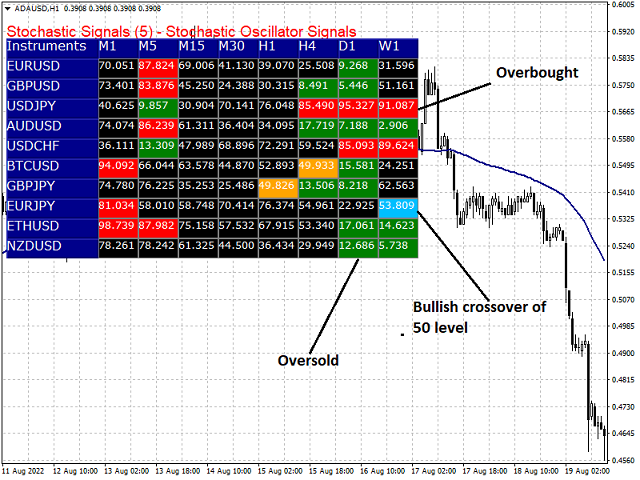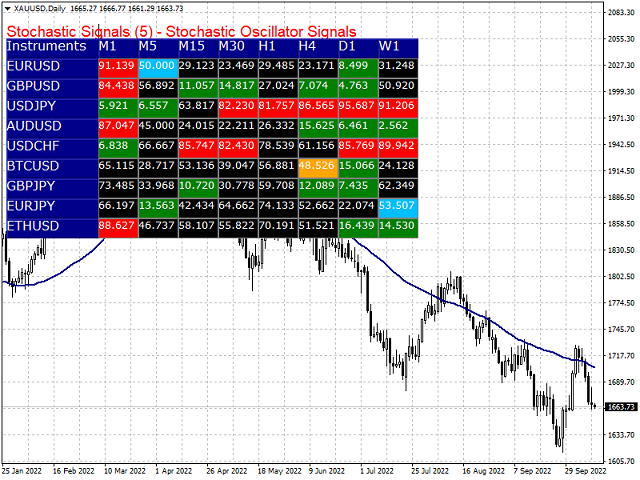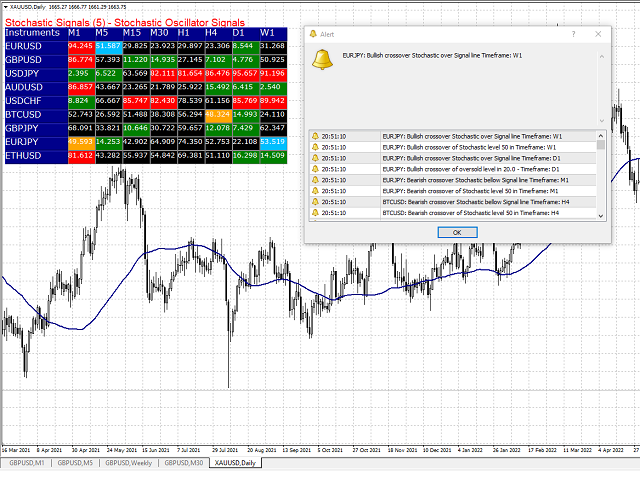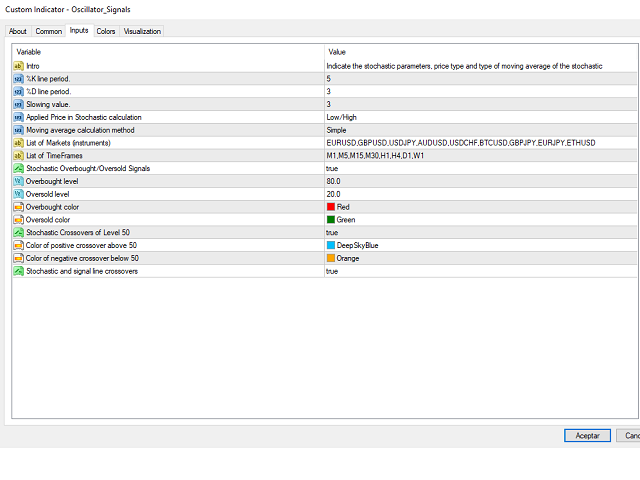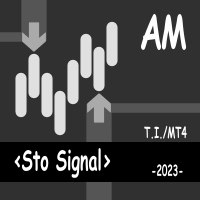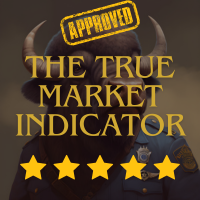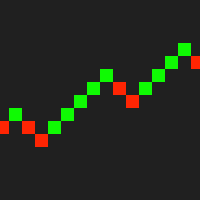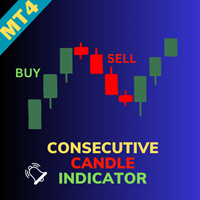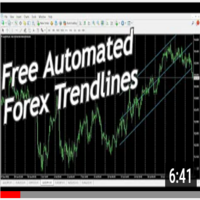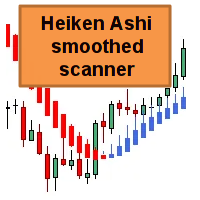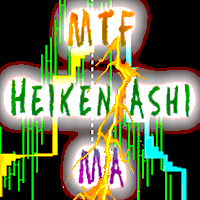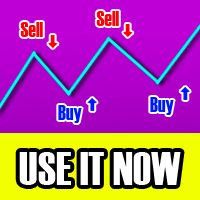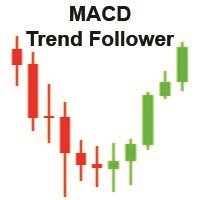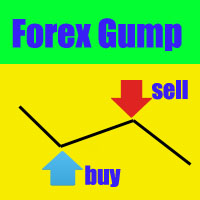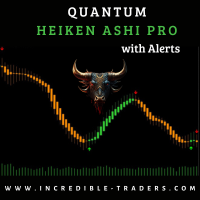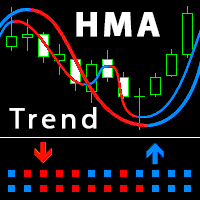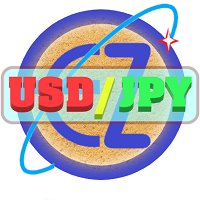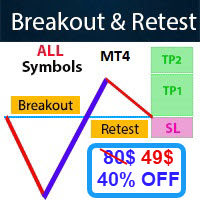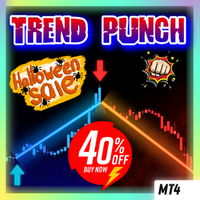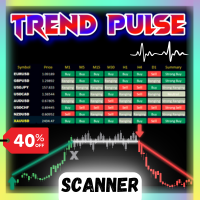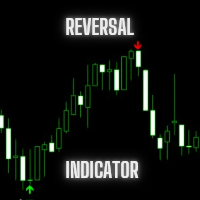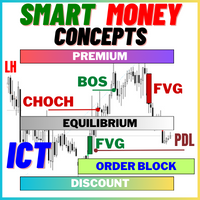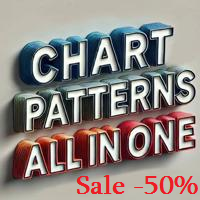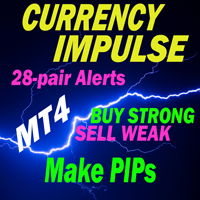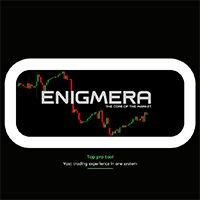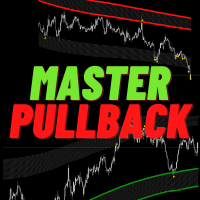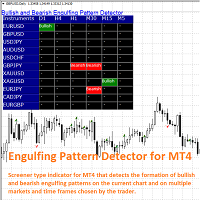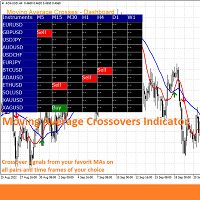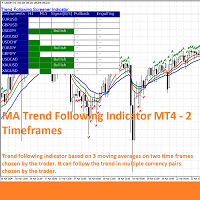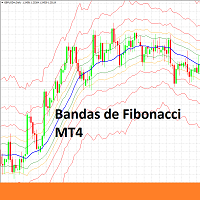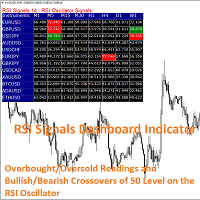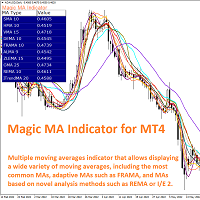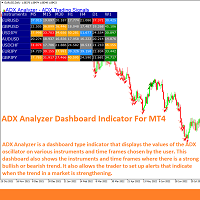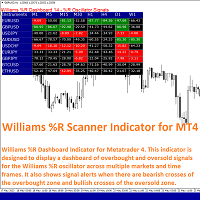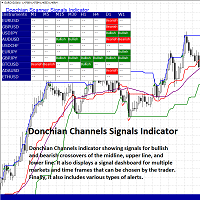Stochastic Signals Dashboard For MT4
- Indikatoren
- Raul Canessa Castameda
- Version: 1.0
- Aktivierungen: 8
Stochastic Signals is a simple dashboard type indicator that displays the values of the stochastic oscillator on various instruments and time frames chosen by the user. The stochastic is usually used in many trading strategies, especially in countertrend systems when the price reaches overbought/oversold conditions. In addition, this indicator can be configured by the trader to show signals when the stochastic oscillator is in an overbought/oversold condition, when it crosses these levels or when it crosses the 50 level, which in some strategies is important. It also shows if the stochastic crosses its signal line. This tool is simple and easy to set up.
By itself, it should not be used as a trading system since stochastic signals are not 100% reliable (any market can remain overbought or oversold for a long time), as is the case with any technical indicator, but it is a useful support tool.
The parameters that can be configured in Stochastic Signals are the following:
- %K Line period: It is the value of the lookback period used to calculate the value of the stochastic.
- %D Line period: It is the period of the moving average of the stochastic.
- Slowing value: Here you determine whether you want the slow or fast stochastic. If you leave it at 1, the indicator calculates the slow stochastic, but if you use a value greater than 1 then it will calculate the fast stochastic.
- Applied Price in stochastic calculation: Here the trader can choose between Low/High and Close/Close to calculate the stochastic.
- Moving average calculation method: To calculate the Stochastic, the SMA moving average is usually used, but here the trader can choose between the SMA, EMA, Smoothed and Linear Weighted moving averages.
- List of Markets: Here the trader indicates the markets or currency pairs in which he wishes to calculate the Stochastic values. You can add as many pairs as the broker offers on the platform. By default, the indicator shows EURUSD, GBPUSD, USDJPY and AUDUSD pairs.
- Time_frames : In this parameter we can indicate in which time frames we want to calculate the Stochasticfor each currency pair. We can aggregate all the time frames that MT4 offers. By default, the indicator displays frames M5, M15, M30, H1, H4, D1 and W1.
- Stochastic Overbought/oversold signals : Through this parameter we indicate if we want the dashboard to show overbought and oversold signals. By default, the value is False (do not display). If we want the signals to come out, we must select True.
- Overbought level : It is the level where the Stochastic reaches an overbought condition. It is taken as a bearish signal of the indicator. The default value is 80.
- Oversold level : It is the level where the Stochastic reaches an oversold condition. It is taken as a bullish signal of the indicator. The default value is 20.
- Overbought Color: Allows you to configure the color of the overbought readings on the dashboard.
- Oversold Color: Allows you to configure the color of the oversold readings on the dashboard.
- Stochastic Crossovers of Level 50: In this parameter we indicate if we want the dashboard and the alert window to show signals of bullish and bearish crossovers of the 50 level of the Stochastic. By default, the value is in False (do not show). If we want the signals to come out, we must select True.
- Color of positive crossovers above 50: Here we can configure the color of the bullish crosses of the 50 level of the Stochastic.
- Color ofnegative crossovers below 50: Here we can configure the color of the bearish crosses of the 50 level of the Stochastic.
- Stochastic and signal line crossovers: Through this parameter we indicate if we want signal alerts for Stochastic crossovers with its signal line.
-To add new currency pairs in Markets, we write the symbol of the pair, for example XAUUSD, without the “/” symbol and separated by a comma (no spaces).
-Overbought and oversold signals are shown by changes in the color of the stochastic boxes. When the stochastic is in an overbought condition the box turns red and when it is oversold it turns green.
